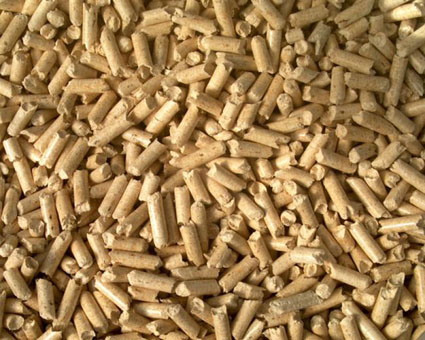Wood pellet industry
Global pellet manufacturing
Wood Pellet Market Grows
The international wood pellet industry has developed remarkably fast, raising from being practically non-existent 15 years ago to being an important wood fiber consumer which is greatly competing with pulp and wood-panel industry for raw-material.
 Global pellet manufacturing was close to 10 million tons in 2008, according to Ukrainian Biofuel Portal. The production will double over the next 4-5 years and some industry experts forecast an annual growth of 25-30% globally over the next ten years.
Global pellet manufacturing was close to 10 million tons in 2008, according to Ukrainian Biofuel Portal. The production will double over the next 4-5 years and some industry experts forecast an annual growth of 25-30% globally over the next ten years.
Europe is currently the major market for pellets. There is interest for non-fossil fuels in North America. The new leadership in the US government is going to have a positive impact on alternative energy usage and the expected change in energy policy could very well result in increased imports of pellets from Canada to the US, which will eventually decrease the flow of biomass from North America to Europe. That is why European pellet consumers will have to search for alternative supply sources in Asia, Latin America, Africa, Russia, Belarus, Ukraine.
The major raw-material used for pellet production is sawdust and shavings from the sawmilling industry. There is now an increased interest in searching for alternative fiber. It can be expected that European pellet producers will increasingly use forest residues, urban wood waste and fast-growing tree species. They will also begin to compete more aggressively with pulpmills and wood-panel mills for sawmill chips and pulplogs. Imports of wood chips from over-seas may also be an option for some pellet plants.
A large share of the global pellet production is being shipped to markets outside the producing country, not only between countries but also intercontinentally. According to Ukrainian Biofuel Portal, an estimated 27% of world production was exported in 2008. Most of the overseas volume was shipped from British Columbia, Canada to Belgium, the Netherlands and Sweden. Currently low costs for raw material (shavings and sawdust) in Canada and the high prices for wood pellets in Europe is the major reason of such a situation.
The rapid expansion in global trade of biomass (both wood chips and pellets) is likely to continue over the next three to five years as more countries favour renewable energy and as local, relatively inexpensive supplies of biomass reach their limits. The matter is how long expansion of the overseas water-borne transport will continue to grow, given the uncertainty of future costs of oil and the paradox of consuming large quantities of low-refined heavy fuel oils for the shipments of green energy to European customers.